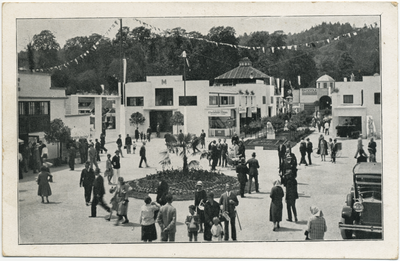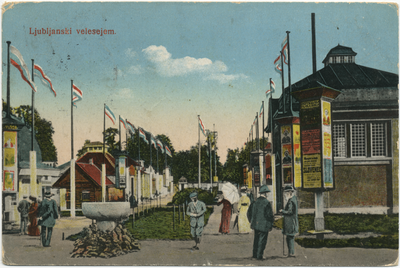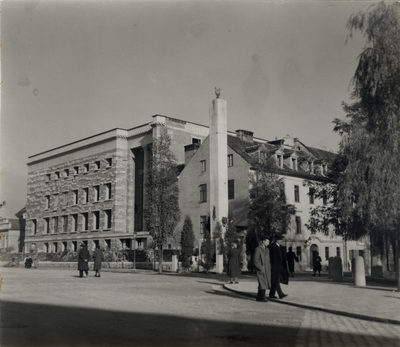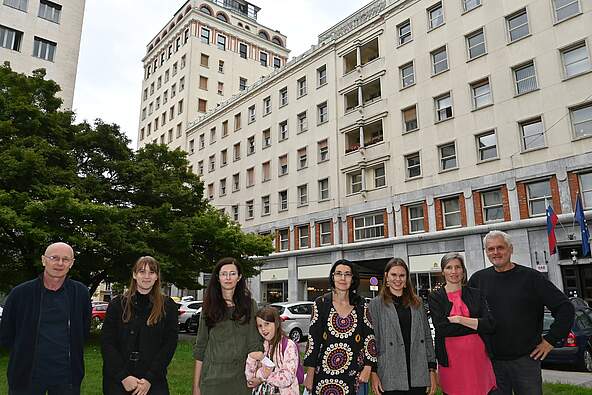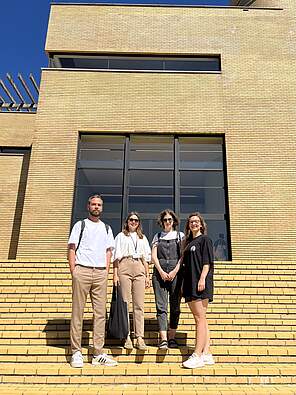Team Presentation
Part of the research project URBAN DEVELOPMENT IN THE "INTERWAR PERIOD" IN EUROPE (1918-1939) is also Ljubljana, the capital of Slovenia. Rich city history has its origin in a Roman city called Emona. Ljubljana itself was first mentioned in the first half of the 12th century. The origin of the name of the city, Ljubljana, is unclear. In the Middle Ages, both the river and the town were also known by the German name Laibach. Ljubljana was situated at the middle of a trade route between the northern Adriatic Sea and the Danube region, it was the historical capital of Carniola, one of the historical lands of Habsburg Monarchy. Ljubljana remained cultural and political capital of Slovenes and after dissolution of the Austro-Hungarian Empire in 1918, became a Slovene capital in new Kingdom of Serbs, Croats and Slovenes later renamed in Kingdom of Yugoslavia. After World War II, Ljubljana became the capital of the Socialist Republic of Slovenia, part of the Socialist Federal Republic of Yugoslavia. It retained this status until Slovenia became independent in 1991 as it became the capital of the newly formed state.
In Ljubljana for centuries education of students was going on, yet only in 1919 the University of Ljubljana was established, one of its founding members was also the Faculty of Arts. Between the two world wars, the University of Ljubljana, was one the youngest and smallest university in the then Kingdom of Serbs, Croats and Slovenes, and was granted the least funds. At the end of WWII, the University of Ljubljana entered a new period. The founding member faculties expanded their study programmes. The same was going on also in Faculty of Arts when new departments were established. At the Faculty of Arts it is currently possible to study 25 different disciplines as some combination of a major (A) and minor (B) course of study, or just one discipline as a major course of study. Master's Degree studies are available for all disciplines; due to the varieties and ever greater interdisciplinarity of the research orientation of the programmes, each Master's Degree study programmeis formulated on an individual basis.
In 1919 the Faculty was established primarily for the purpose of connecting the fundamental fields of academic study in Slovenia, and it still carries out this mission since for the majority of disciplines which have developed within it, the Faculty of Arts remains the highest level scientific and educational institution in Slovenia, and for some of the these disciplines it is the ‘home institution’. Its 7,700 students help it maintain its eternal youth, although it is a wise old lady that has already seen 100 years of contemplation and operation. It is a faculty that enjoys international recognition and which has respected professors, a broad range of study programmes, successful students, international student exchange programmes, numerous inter-faculty connections, its own publishing house, the second largest library in Slovenia, and is an integral part of the very center of the capital city. The center of Ljubljana also boasts libraries, archives, galleries, museums, and theatres – all the institutions which represent some sort of natural laboratory for the work of the students at the majority of the study programmes at our Faculty.
The history of the city of Ljubljana was already part of the project Euphoria and a new beginning - sending wars in European homes, in which the time of the First World War 1914-1918 in which cities were explored from the perspective of everyday history in international cooperation. For the follow up of the research Ljubljana was again included in the new research projects which follows SEiZiE, in this project urban development 1918-1939 in eight European cities is to be worked on in an international comparison. Images, stories, photography, documents and statistics from Ljubljana will be this time investigated by the research group from Faculty of Arts, University of Ljubljana. Five researches from Department of History and Department of Art History from the Faculty will be engaged.
From the Department of History come Assist. Prof. Irena Selisnik, Assist. Prof. Ana Cergol Paradiz and Assoc. prof. Bojan Balkovec. From the Department of History of Art comes Assist. Prof. Martina Malesic. The team is also significantly complemented by Master's students Urska Svetina, Neza Lukancic and Ana Kure.
Town Presentation
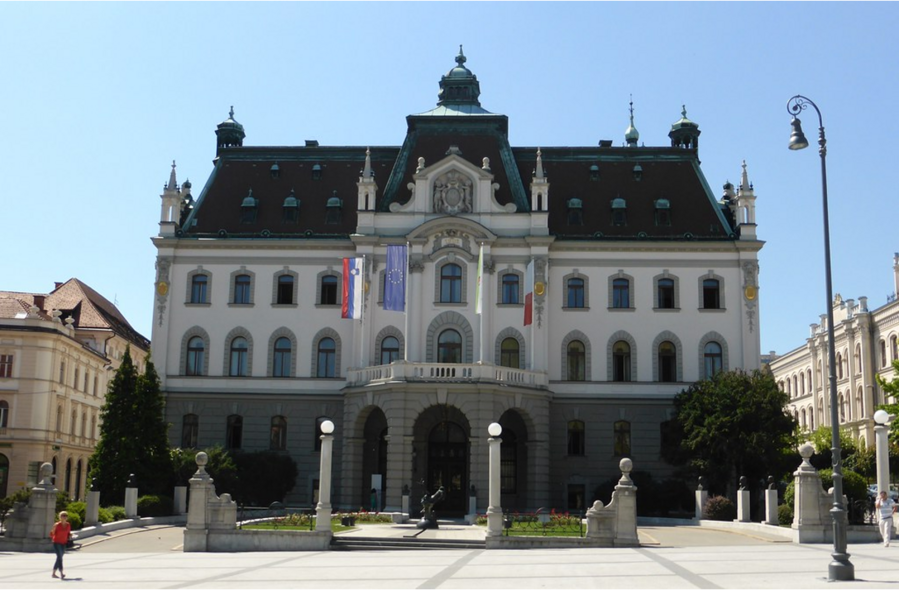
With around 288,000 inhabitants, Ljubljana is the largest city in the Republic of Slovenia, as well as its capital. As such, it is the seat of the central state institutions and other institutions of national importance. In addition to the University Medical Centre, the National, Ethnographic and Natural History Museums, and the National and Modern Galleries, Ljubljana is also home to the country's largest and oldest university, which, with its 50,000 students, gives the city a special character.
The most important economic activity in Ljubljana is still industry, especially the pharmaceutical, petrochemical, and food industry, although banking, trade and tourism have also become increasingly important in recent years.
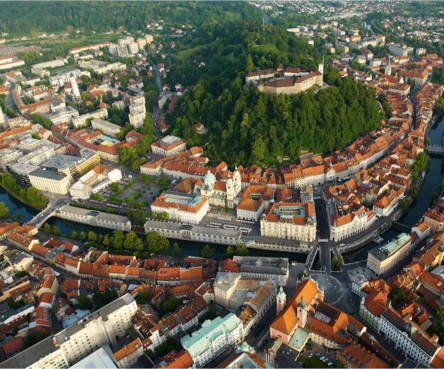
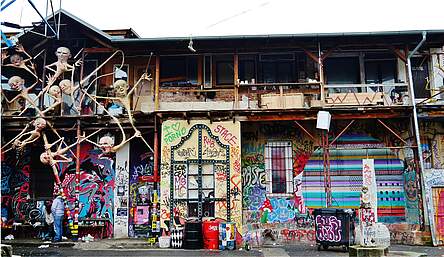
Ljubljana's picturesque Old Town, with the river Ljubljanica flowing through it, and a view of the Ljubljana Castle, attracts tourists. Alternative culture enthusiasts can enjoy the autonomous cultural centre Metelkova mesto, which has several museums nearby. And in the eastern part of the city lies the region's largest shopping centre BTC CITY.
In 2016, Ljubljana was awarded the title of Green Capital, thanks to its many green spaces and parks. The largest park is called Tivoli, which is close by Tivoli Castle, the Museum of Contemporary History of Slovenia, and Hala Tivoli, which is the city's largest sports facility next to Stozice Stadium.
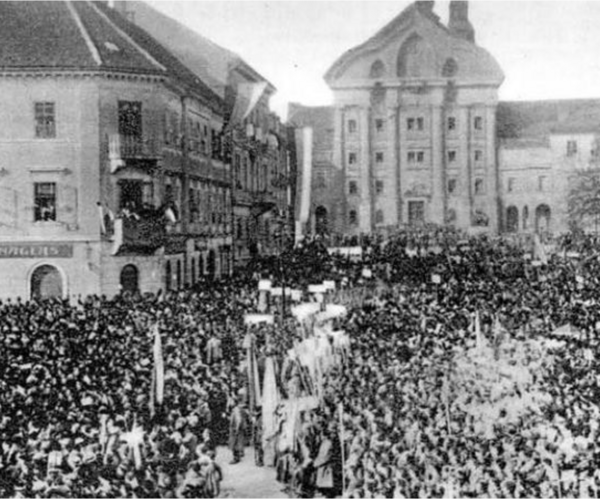
Ljubljana's favourable geographical location between the Alps and the Adriatic Sea has enabled it to become an important transport hub, and a place that was influenced by both Mediterranean and Central European cultures throughout history.
Before the First World War, Ljubljana was the centre of the crown land of Carniola under the rule of the Habsburg Monarchy. Ljubljana was also the cultural capital of Slovenia, but its economic and political importance was relatively marginal. This changed drastically in the interwar period. On 29 October 1918, the State of Slovenes, Croats, and Serbs was established on the ruins of the Habsburg monarchy. On the day of its founding, a mass demonstration with more than 30,000 participants took place in Ljubljana's Congress Square. Shortly afterwards, the State of Slovenes, Croats, and Serbs merged with the Kingdom of Serbia to form the Kingdom of Serbs, Croats, and Slovenes. This was later renamed to the Kingdom of Yugoslavia, which was divided into individual provinces. Ljubljana became the centre of one of these provinces called the Drava Banovina, which encompassed the entire Slovenian territory within the Kingdom of Yugoslavia.
Under the influence of these political changes, Ljubljana developed into the administrative, cultural, and scientific centre of Slovenia in the period between the two wars.
After 1919, the Ljubljana Music Conservatory and Orchestral Society, the Ljubljana Chamber of Engineers, the Architects' Club, the National Gallery, the National Museum and the University Library, along with other important associations and institutions were founded. Several new newspapers and magazines started being published and the publishing business flourished. The Slovenian university was established as well, which constituted of 5 faculties: faculties of law, philosophy, theology, engineering, and medicine. Before the Second World War, the Slovenian Academy of Sciences and Arts (1938) was established.
Between the two wars, the city progressed economically as well. Within the Kingdom of Yugoslavia, new markets opened for Slovenian companies. The Ljubljana Fair (1921) and the Ljubljana Stock Exchange (1924) were also important additions to the diverse economic activity of the time.
Modernisation had already partly taken hold of Ljubljana before World War I. At that time, the city got its first public water and electricity supply system (1890 and 1898), a modern sewage system (1898), a tramway system (1901) and its first cinema (1907). This trend continued after the war. Within twenty years, Ljubljana had opened several cinemas. In 1923, for example, a cinema called Ljubljanski dvor was opened, which, according to the contemporary newspapers, "was the most beautiful cinema in the Balkans".
Along with the city itself, the worldview of the city's inhabitants gradually modernised in the interwar period. The formation of numerous associations and some women's magazines testifies to the city's desire to embark on the path of women's emancipation. The number of female students was increasing as well as the number of women working as civil servants.
Ljubljana also experienced important demographic shifts during this period. After the turbulent war and post-war years, when the Spanish influenza epidemic was still sweeping through the city, the death rate gradually began to fall, in part due to the development of public health care. An important turning point in this respect was the establishment of the Institute of Hygiene in 1923, which made a fundamental contribution to the spread of preventive health measures, for example, to curb alcoholism or Tuberculosis.
The population of the city grew more and more. In 1931, Ljubljana had just under 60,000 inhabitants. Migration also contributed to this increase. After the war, some of Ljubljana's German-speaking citizens migrated from the city due to nationalist pressures, but at the same time, Slovenian migrants from the former Austrian Littoral moved to Ljubljana, as the Austrian Littoral became part of Italy after the war. Serbian officers and military personnel and, after the October Revolution, (some) educated Russian immigrants also arrived. But the problem was the lack of housing for the newly arriving workers and administrative staff. The poorest inhabitants of the city were forced to live in various temporary dwellings, usually shacks. Behind Bezigrad, however, new housing estates were built according to modern, functionalist views. In some suburban areas, especially in Rozna Dolina, well-off members of the bourgeoisie built their villas. It was in the period between the two wars that the image of the city centre itself was fundamentally transformed by Joze Plecnik, whose work achieved a harmony between the Romance Baroque and the Germanic Art Nouveau styles. His personal mark on the period was so strong that the city's architecture has often been referred to as Plecnik's Ljubljana. Plecnik also made a fundamental contribution to the regulation of the river Ljubljanica and designed the promenade to the castle hill.
In 1933, a skyscraper called Neboticnik was built based on the designs of architect Vladimir Subic. Neboticnik, at over 70 metres, was the tallest building in Central Europe when it opened and, until World War II, the tallest building in the then political territory of the Balkans. When it was built, it already implemented important technological innovations at the time, like the elevator. The skyscraper is therefore certainly a symbol of modernization and its changes that enveloped the city in the interwar period.
